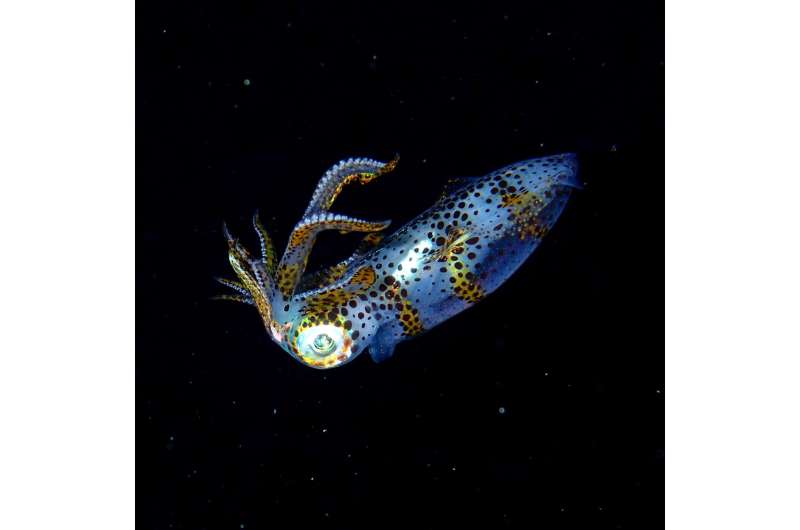Researchers design the cheapest and most efficient squid aquaculture system to date

A squid is a type of cephalopod that has an elongated body, eight arms and two tentacles. Globally, there are at least 300 species of squid distributed across the world's oceans. They're also a healthy food source as they're packed with protein, thus contributing to high-quality meals. But all the species of squid in Japan's waters have been declining since the 1980s and their estimated population sizes are just 10% of what they previously were. The situation is so dire that Japan, which has one of the highest rates of fish and seafood consumption in the world, now relies on imported, processed squid from South America.
But this difficult situation may be nearing an end with the help of aquaculture, the process of farming fish and other water creatures. Researchers from the Physics and Biology Unit, led by Prof. Jonathan Miller, at the Okinawa Institute of Science and Technology (OIST) have developed the first squid aquaculture system that has the potential to be commercialized. Successfully rearing squid in a way that is compatible with aquaculture has never before been achieved due to several of the animal's traits such as their aggressive behavior, sensitivity to water flow, food preferences, and complex lifecycle.
"Generally, people think that aquaculture is easy but actually it's quite challenging," said Dr. Zdenek Lajbner, who is responsible for squid culturing within the OIST Unit. "Take, for example, Japanese eel and tuna. Marine scientists have been trying to develop aquaculture for these two animals for decades. Despite of that, both markets still predominantly rely on wild catch."
Similarly, for the last 60 years, scientists have been trying to establish squid aquaculture with minor success. This invention has not only closed the lifecycle of the squid (a significant challenge in itself), but it's also done in a way that's efficient and cheap enough to be commercialized. Dr. Lajbner highlighted that the system specifically focuses on providing good conditions for spawning and hatching.
"We applied knowledge from different parts of aquaculture and made a lot of adjustments," said Dr. Ryuta Nakajima, visiting researcher at OIST. "Compared to my experience in two other labs, the hatching and survival rate of the animals is much higher here."
This aquaculture system is aimed at a group of species called oval squid. Okinawa has three species of oval squid, with the ocean around mainland Japan having one or two.
"This is a ground-breaking step towards the development of sustainable squid farming over multiple generations," said Prof. Miller.
The researchers are now working closely with OIST's Office of Technology Development and Innovation (TDIC) to meet with companies who would be interested in commercializing the invention. As part of this, they have filled a provisional patent.
"We are excited to promote this technology externally to companies for potential licensing opportunities," said Mr. Graham Garner, TDIC's Technology Licensing Specialist.
Provided by Okinawa Institute of Science and Technology




















